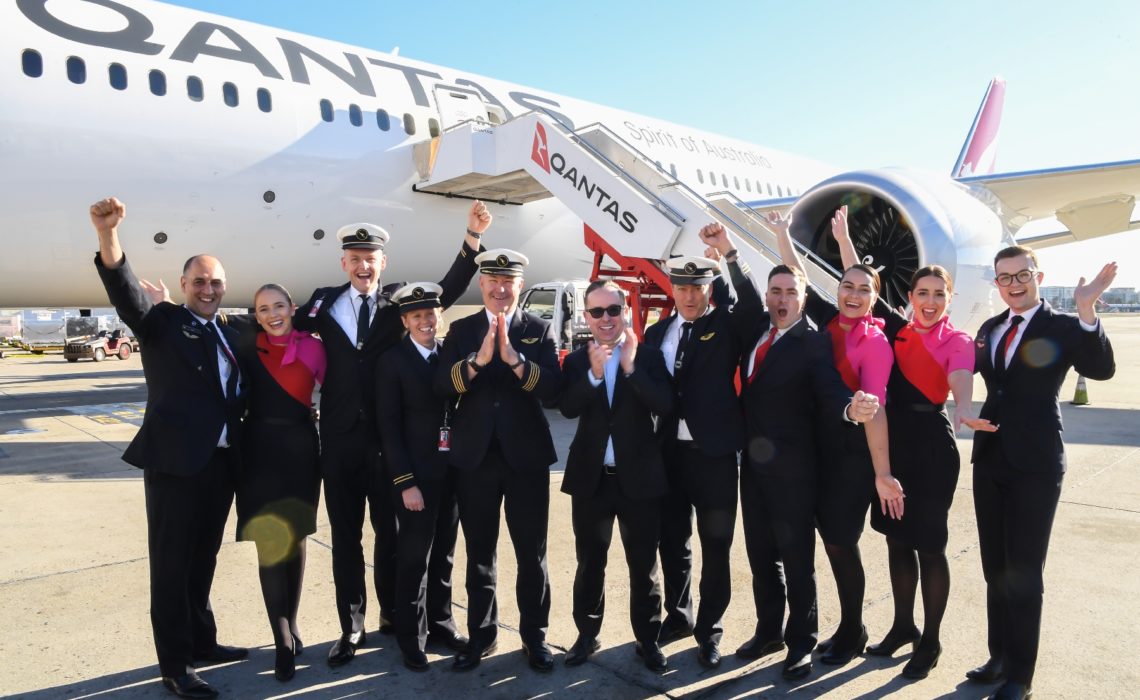
You might also like:
The first non-stop commercial airline flight from New York to Sydney has landed after 19 hours 16 minutes in the air.
A total of 49 passengers and crew were on the flight, which was used to run a series of experiments to assess health and well-being onboard.
Data from these experiments will be used help shape the crew rostering and customer service of Qantas’ ultra-long-haul flights in future – including Project Sunrise.
Tests ranged from monitoring pilot brain waves, melatonin levels and alertness, through to exercise classes for passengers.
Cabin lighting and in-flight meals were also adjusted in ways that are expected to help reduce jetlag, according to the medical researchers and scientists who have partnered with Qantas.
Arriving in Sydney, Qantas Group chief executive, Alan Joyce, said: “This is a really significant first for aviation.
“Hopefully, it’s a preview of a regular service that will speed up how people travel from one side of the globe to the other.
“We know ultra-long-haul flights pose some extra challenges but that’s been true every time technology has allowed us to fly further.
“The research we’re doing should give us better strategies for improving comfort and wellbeing along the way.”
He added: “Night flights usually start with dinner and then lights off.
“For this flight, we started with lunch and kept the lights on for the first six hours, to match the time of day at our destination.
“It means you start reducing the jetlag straight away.”
Joyce continued: “What’s already clear is how much time you can save.
“Our regular, one-stop New York to Sydney service (QF12) took off three hours before our direct flight but we arrived a few minutes ahead of it, meaning we saved a significant amount of total travel time by not having to stop.”
Two more research flights are planned as part of the Project Sunrise evaluations – London to Sydney in November and another New York to Sydney in December.
Emissions from all research flights will be fully offset.
A decision on Project Sunrise is expected by the end of the year – with any commercial flights set to following in 2022.
Source: breakingtravelnews.com
